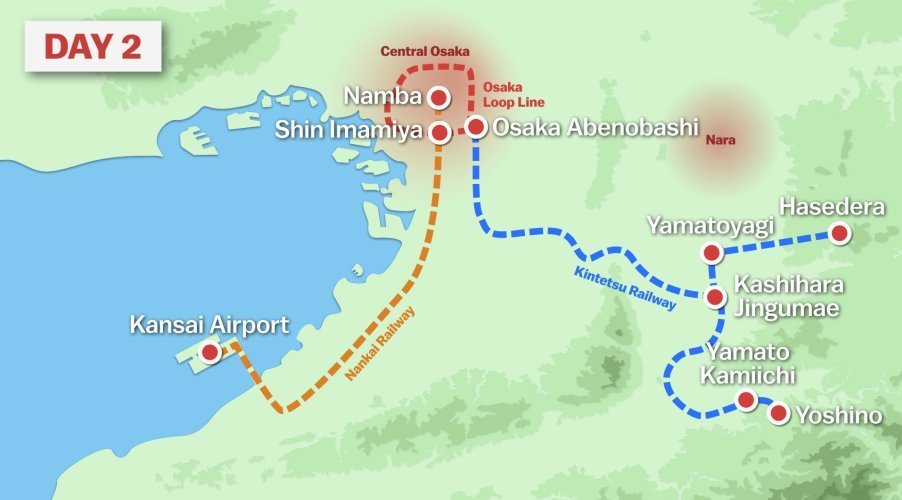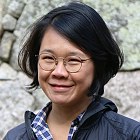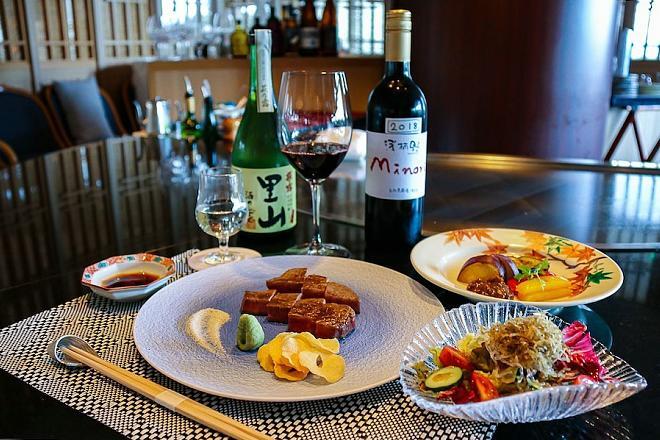Esoteric Mount Yoshino and traditional crafts
Mount Yoshino, or Yoshinoyama as it is known in Japanese, is a well known mountain in Nara Prefecture. The mountain is imbued with spirituality and religious history, and its surroundings offer traditional crafts that are prized throughout the country. Yoshinoyama is most famous as a cherry blossom (sakura) viewing spot thanks to the thousands of cherry trees that have been planted on the mountain and turn its slopes pink every spring. Outside of spring, Yoshinoyama is a tranquil place with fewer visitors and offers a more intimate experience.
From Kansai Airport, I made my way to Osaka-Abenobashi Station to take the Blue Symphony train to Yoshino, where I spent two days in late autumn. The first day was spent on Yoshinoyama, doing a bit of hiking by walking down the mountain and checking out the sights along the way. I saved Kinpusenji Temple for the last before heading to my accommodation, which was a short walk away. Day two started with morning prayers at Kinpusenji Temple, followed by checking out two traditional crafts in the nearby area of Yoshino. Finally, to bring the trip to a close, I visited Hasedera Temple, a Buddhist temple known for its autumn colors.
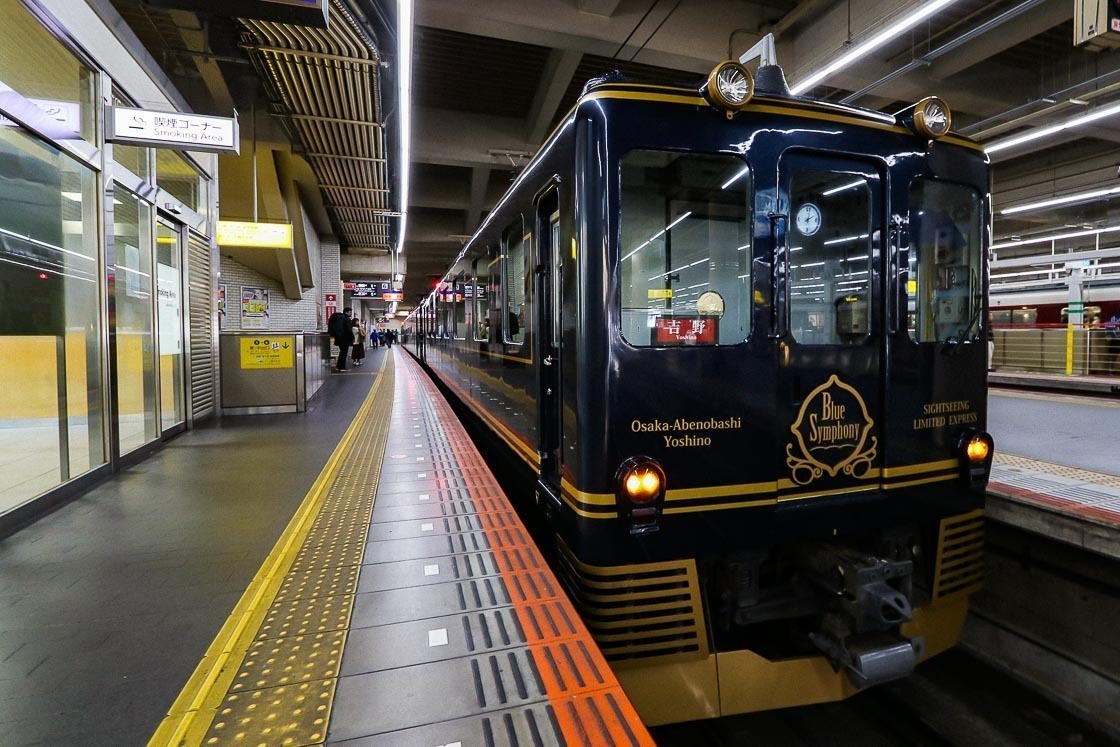

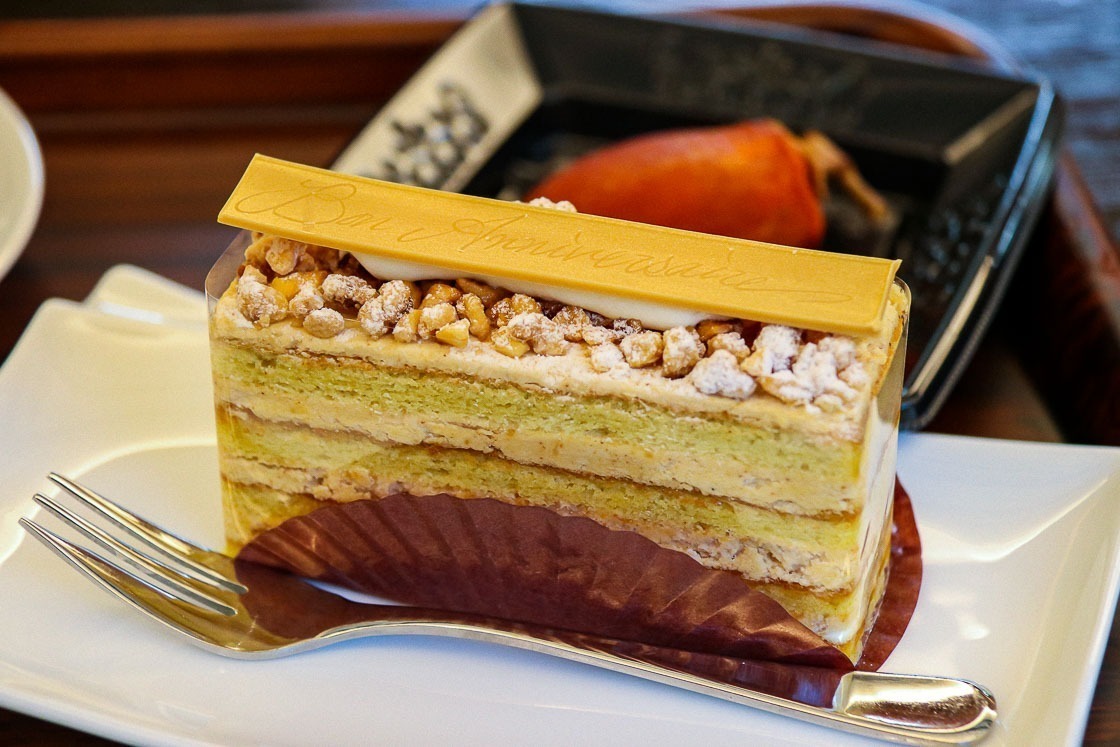
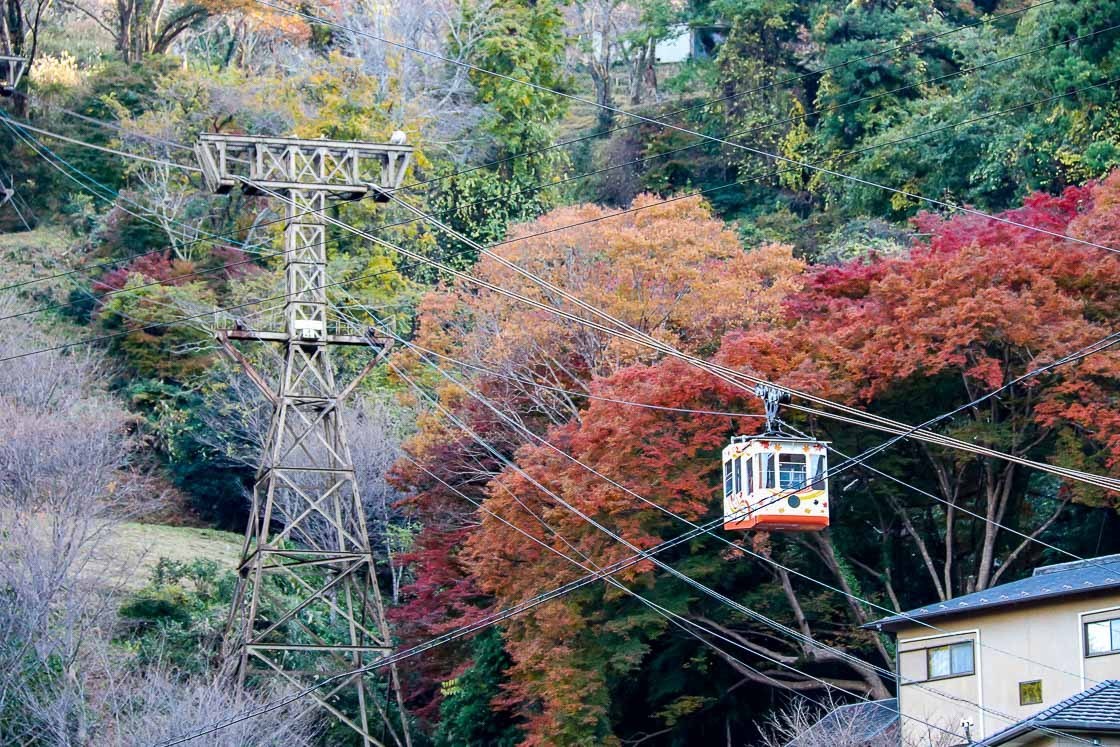
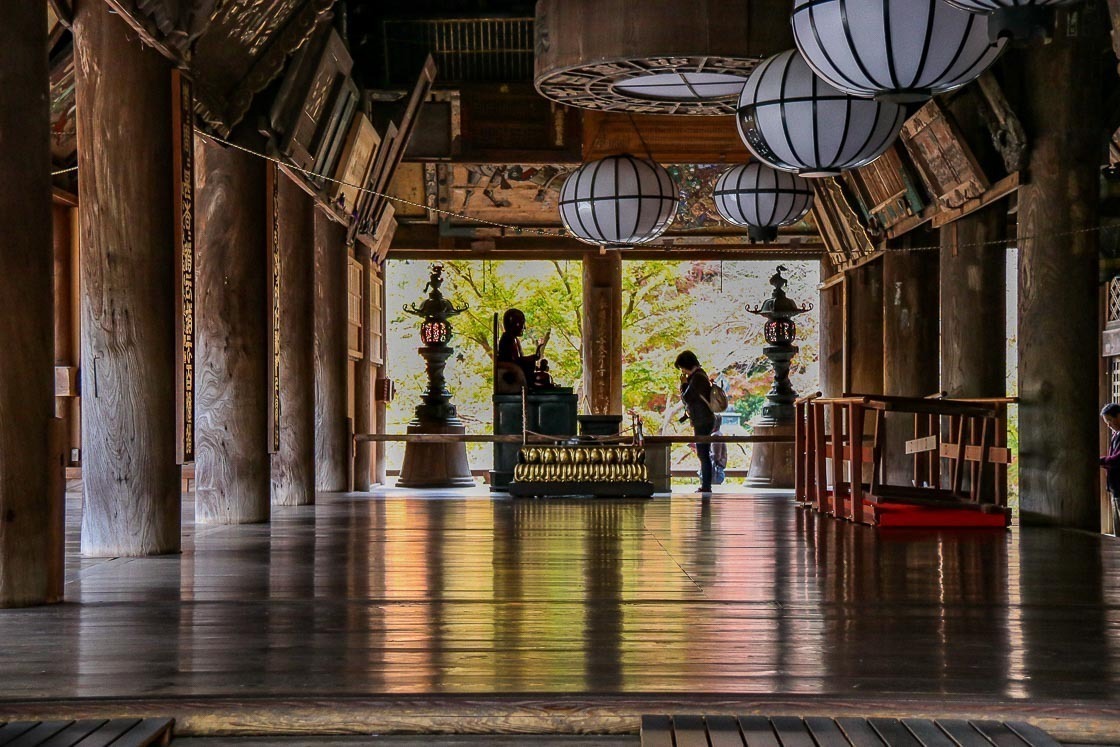
Day 1
More than just a mountain with pretty flowers and views, Yoshinoyama also serves as the starting point of the pilgrimage to Mount Omine, one of the most sacred mountains in the mountain worship religion known as Shugendo. As such, it serves as the site of Kinpusenji Temple, the head temple of the local branch of Shugendo. Yoshinoyama is typically divided into four main areas: Oku-Senbon in the upper area, Kami-Senbon, Naka-Senbon and Shimo-Senbon at the lower area.
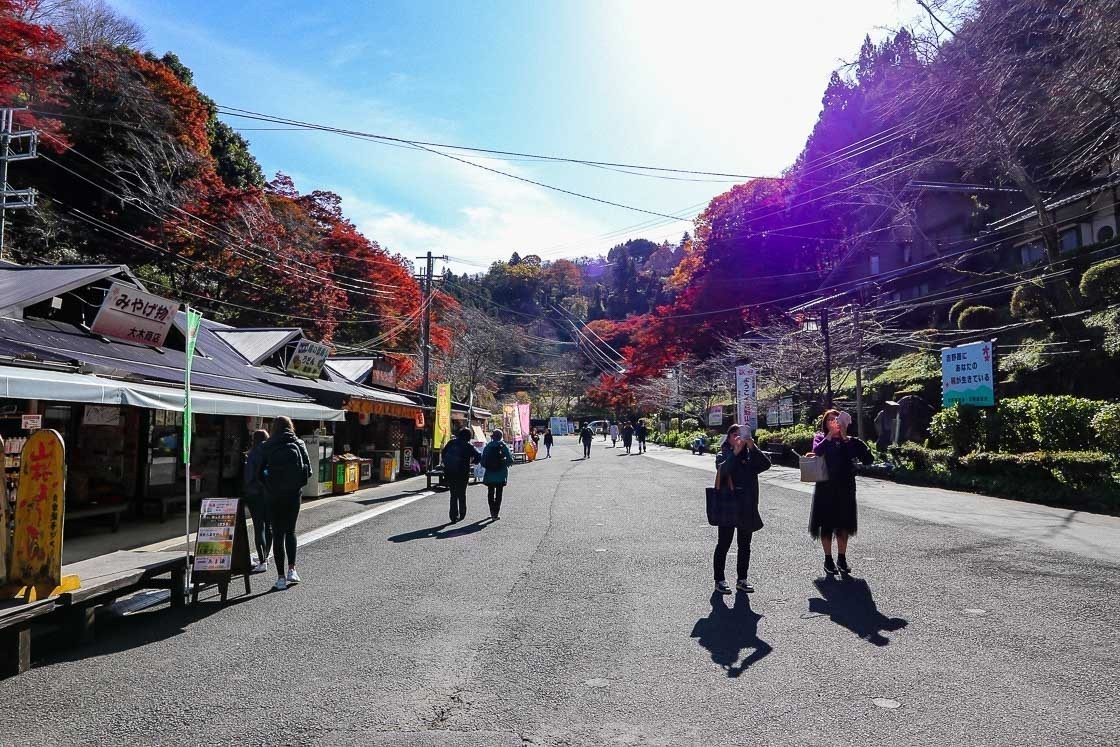
I started my trip on Yoshinoyama by taking a bus all the way to Oku-Senbonguchi in the upper area, and made my way down on foot via the main road. While Yoshinoyama is known for its cherry blossoms, there were still some autumn colors to be seen on the mountain, including copper red cherry trees and striking red Japanese maples. The first stop on my walk down was Takagiyama Observatory, where I was greeted by a rainbow of autumn colors.
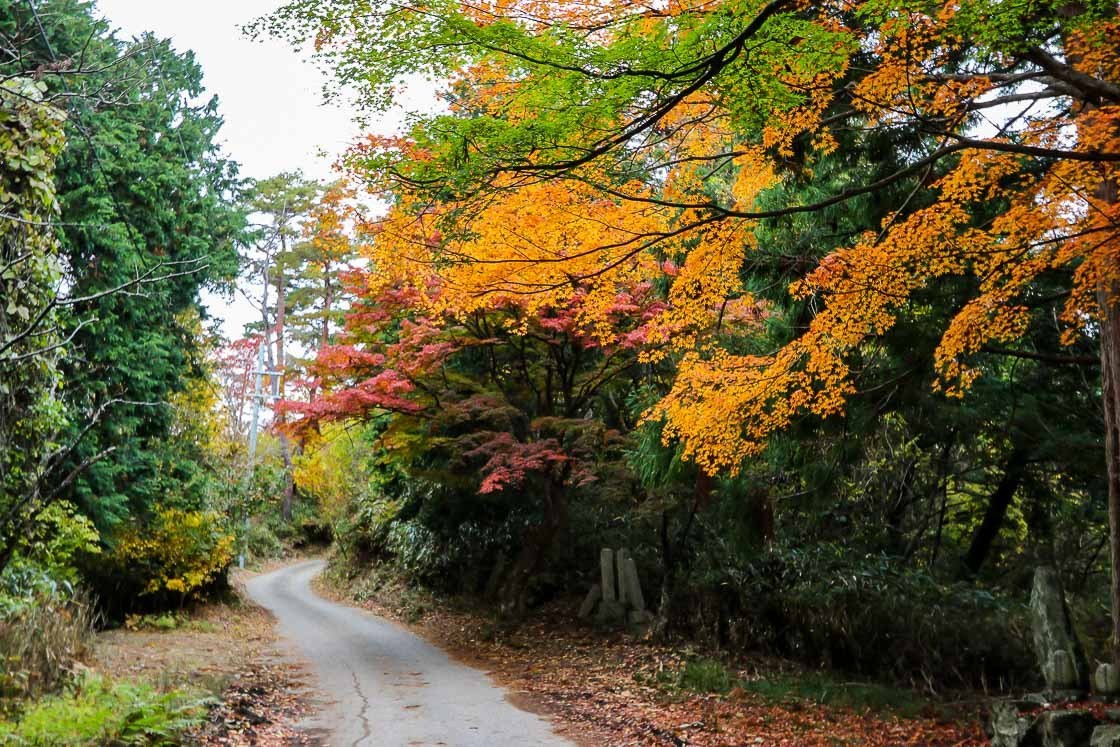
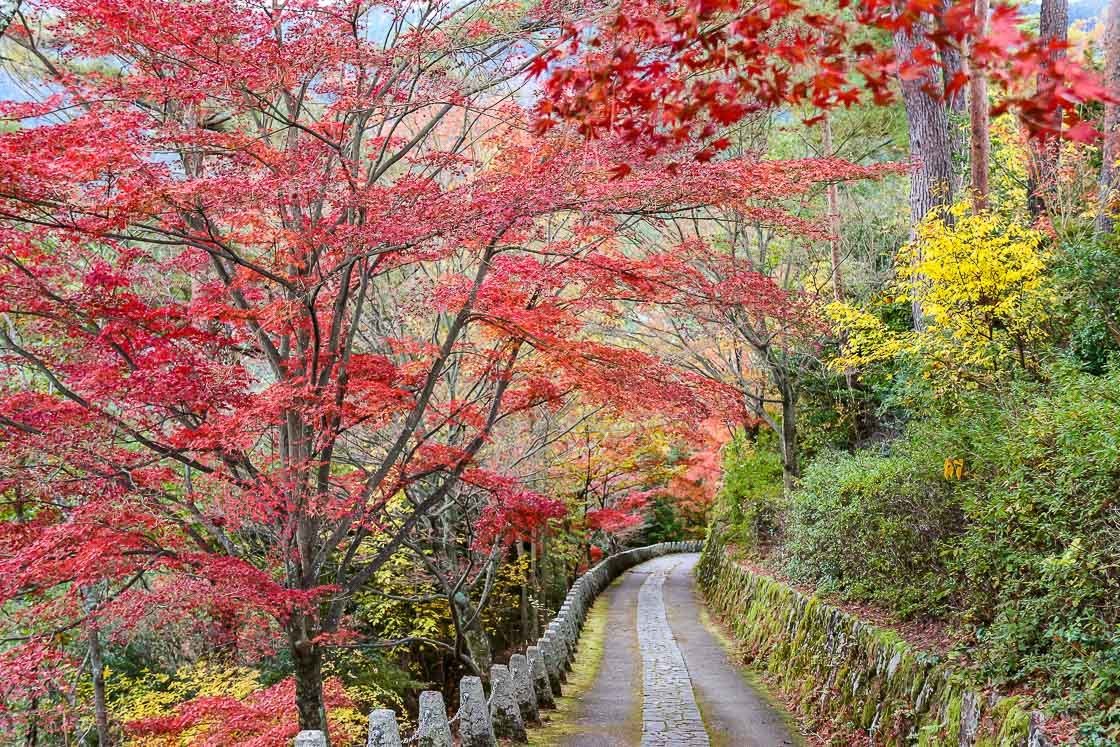
Yoshino Mikumari Shrine was next on my route, and I arrived to its serene grounds in about 20 minutes from Takagiyama Observatory. The shrine was rebuilt in the 17th century, and the architectural designs reflect that period. Yoshino Mikumari Shrine is part of the UNESCO World Heritage site: Sacred Sites and Pilgrimage Routes in the Kii Mountain Range. I spent some time admiring the unique shrine design in quiet contemplation before continuing on my way.
A few minutes' walk brought me to the Hanayagura Observatory, my next stop. The observation deck is best known for its panoramic view of Naka-Senbon and Shimo-Senbon, the lower regions of Yoshinoyama. The view is especially popular when the cherry blossoms are in bloom, and visitors can see the mountain covered with a carpet of pink.
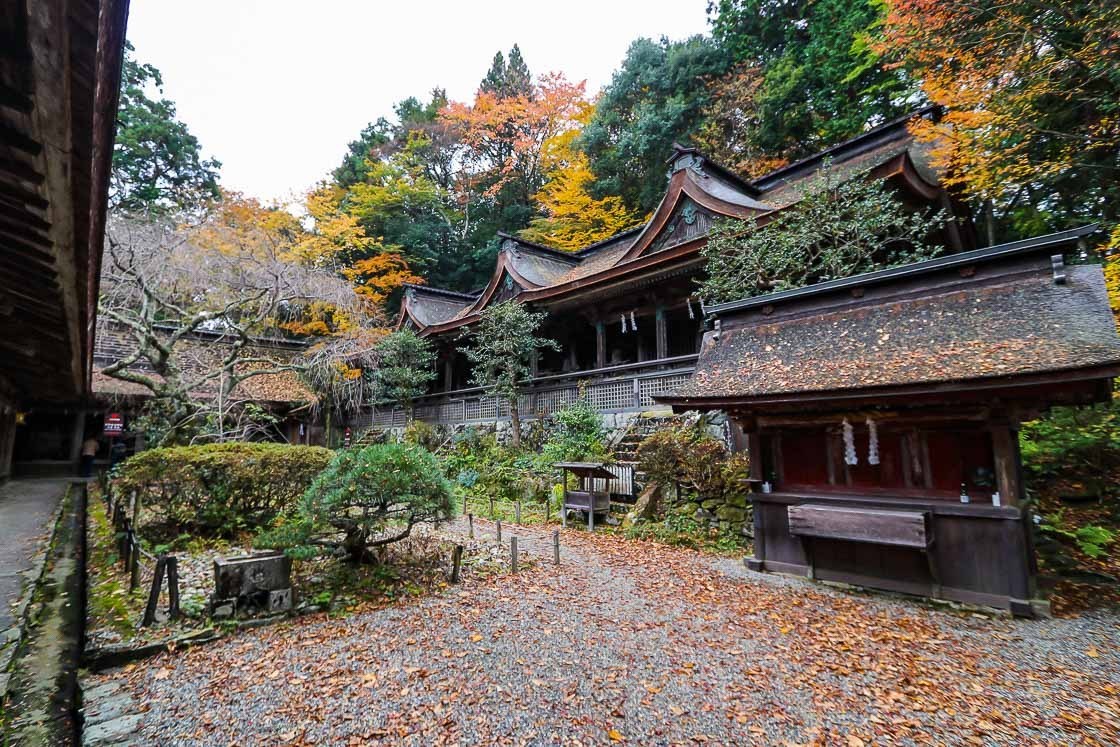
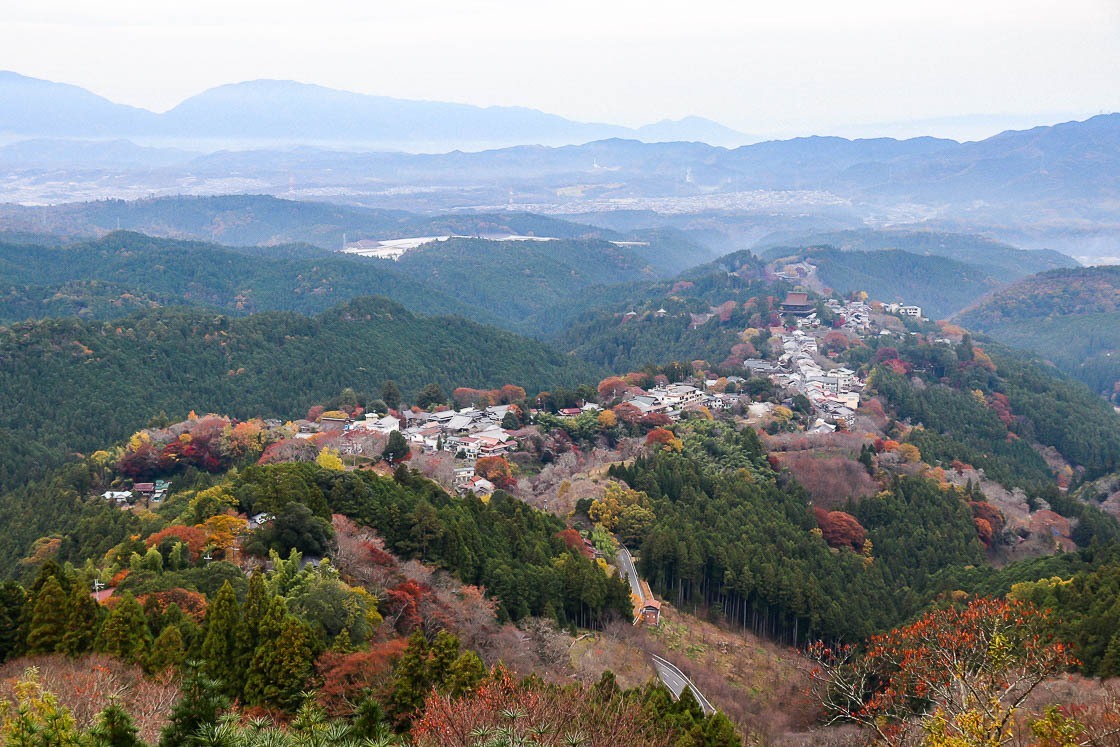
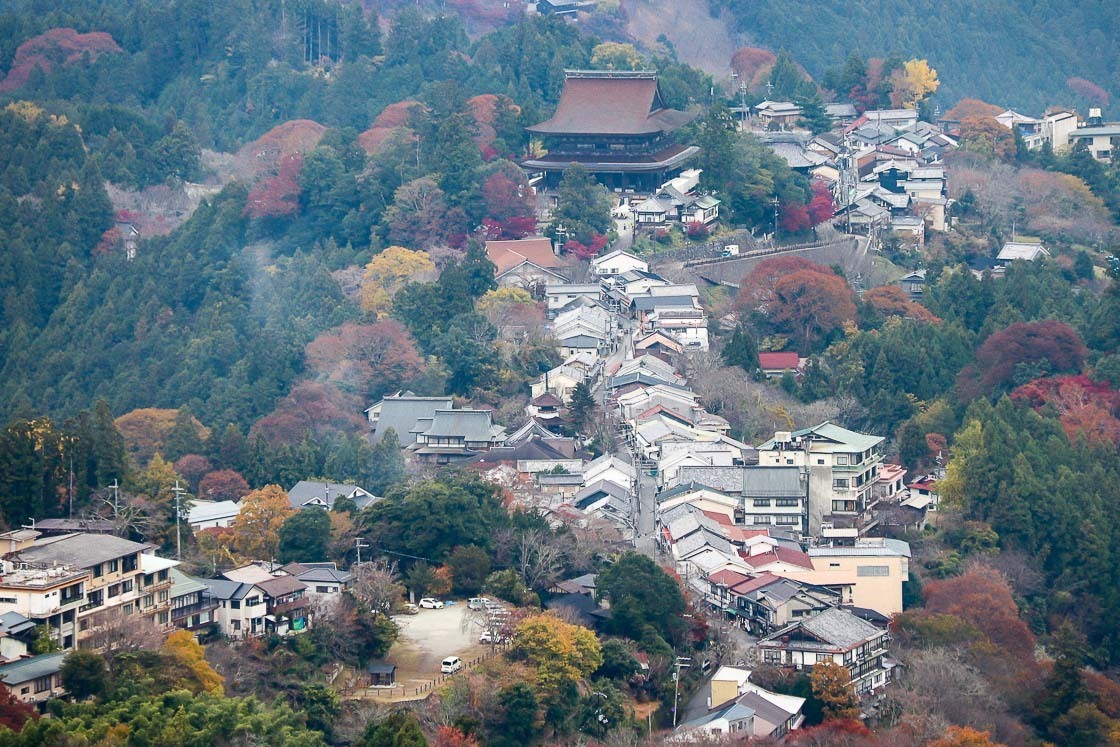
A leisurely 50 minute walk took me into the main Naka-Senbon area, where numerous restaurants, shops and accommodation facilities can be found. It was a nice change from being surrounded by nature to being back in civilization, and the perfect place to try some of the local snacks.
After meandering down the thoroughfare, I arrived at Kinpusenji Temple, the symbol of Yoshinoyama. Kinpusenji Temple was founded in the later half of the 7th century by En-no-Gyoja, the founder of Shugendo mountain worship after he had a spiritual experience in which Kongo Zao Gongen, one of the most important Buddhist deities in Shugendo, appeared to him at the spot where the temple is now located.
The Zao-do Hall is the temple's main hall. Completed in 1592, it houses three 7-meter tall statues of the Zao Gongen, representing the past, present and future respectively. Since 1948, Kinpusenji Temple has been the head temple of the Kinpusen-Shugendo religion with the Zao-do at its core.
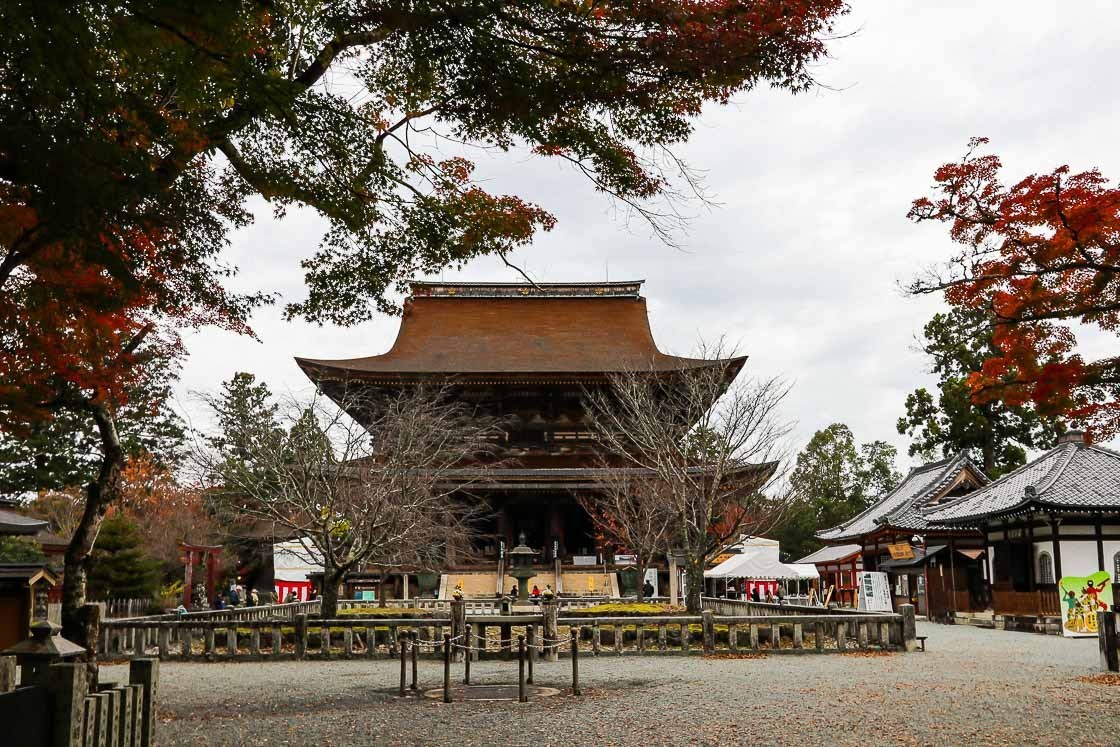
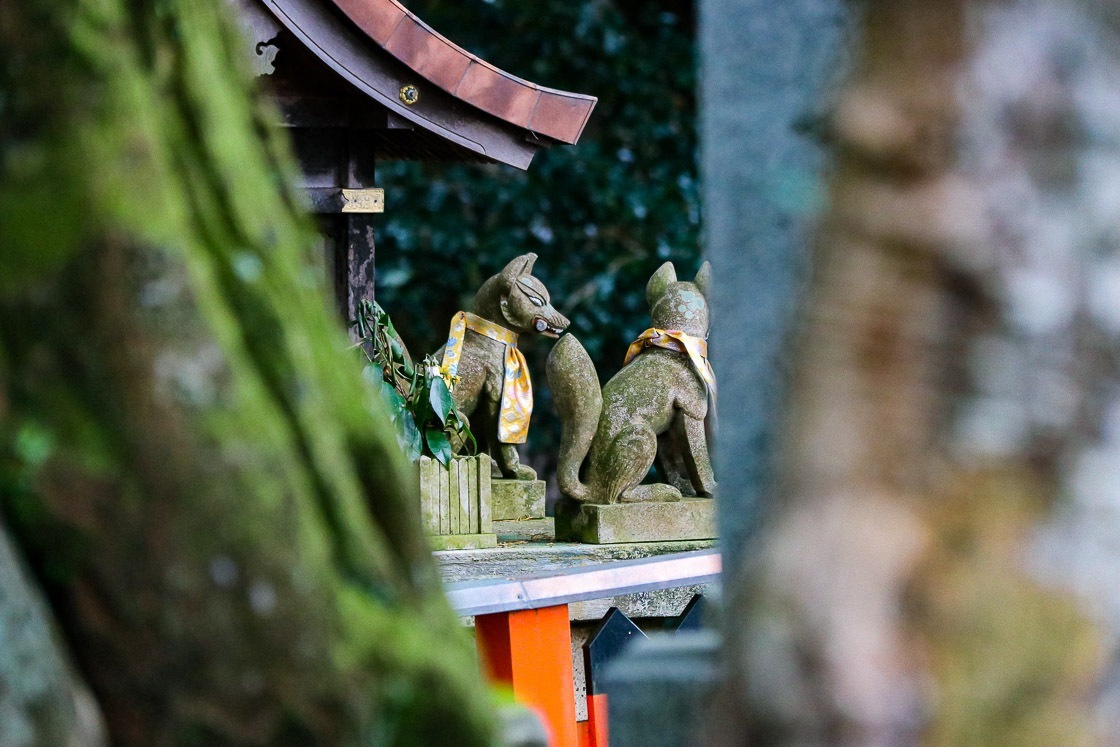
I entered the massive Zao-do Hall, which is said to be second in size to Nara's Todaiji Temple. Inside, the three statues of Zao Gongen stand and loom imposingly over those who go to pay their respects. In addition to these, there are also other statues of Buddhist deities as well as one of the founder, En-no-Gyoja, who was deified about 220 years ago.
Note that the statues of Zao Gongen are currently open for public viewing while the Niomon Gate, which is a national treasure, is under restoration and are otherwise unveiled only during specific periods in a year.

From there, I made my way to Yukawaya, my accommodation for the night, which is a stone's throw from Kinpusenji Temple. The Japanese-style accommodation offers a comfortable overnight experience on the mountain. The service was warm and friendly, and I soon settled down into my room which overlooked the Naka-Senbon area.
Dinner included the local Yoshino ingredient kudzu, Japanese arrowroot. The ingredient has no strong flavor of its own, and is used in both sweet and savory foods. I thoroughly enjoyed my meal at Yukawaya and rate it highly.

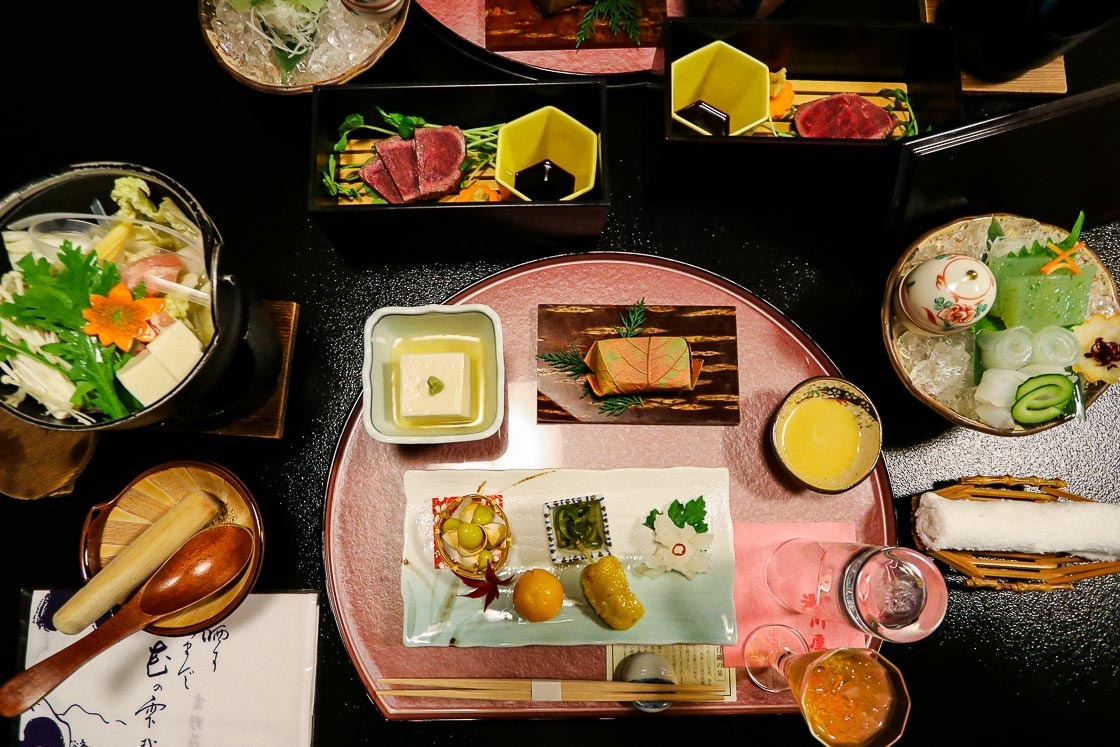
Day 2
The next day, I got up early after a good sleep. The plan was to participate in the morning ceremony at Kinpusenji Temple before breakfast. I was glad that Yukawaya was just a few minutes away on foot from the temple, and made my way there before the sun came up.
Unlike the other morning prayers that I have participated in before, this one at Kinpusenji Temple felt a lot more energetic with the monks playing the conch and drumming on large taiko drums.
The morning prayer or asa-za was held in the Zao-do Hall and lasted about 45 minutes. It started with the monks praying, then attendees were allowed to offer incense, and finally to end the prayer, the monks led everyone in a procession so that we could pay our respects to the other deities there.
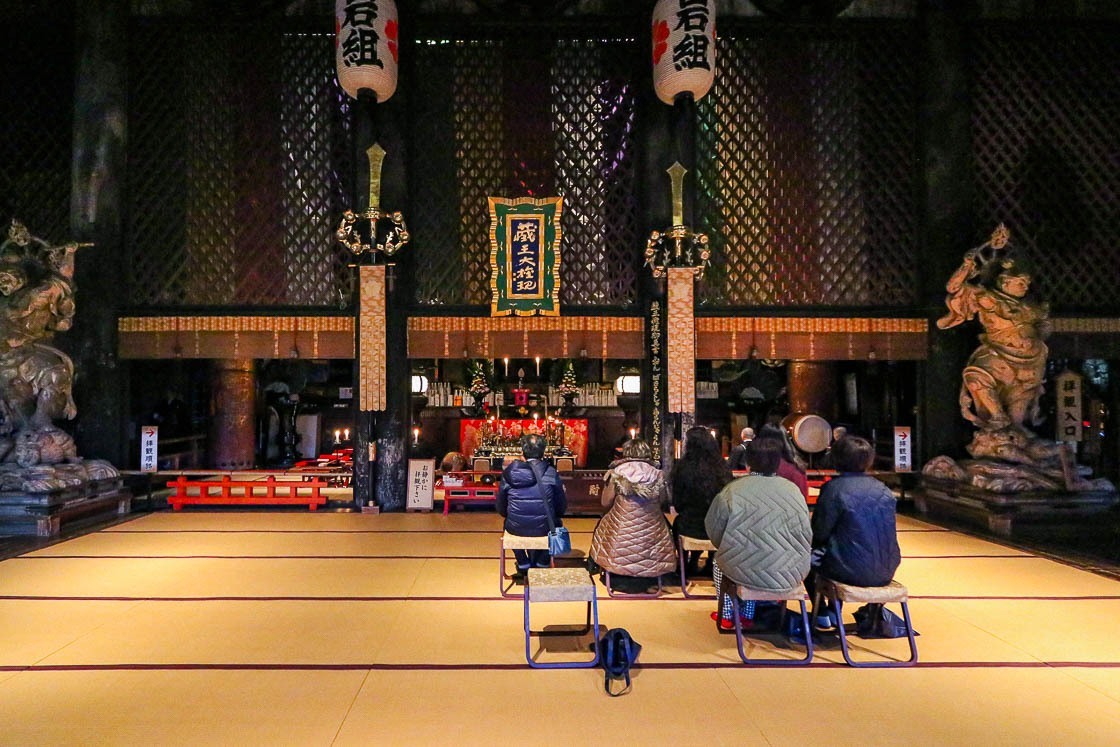
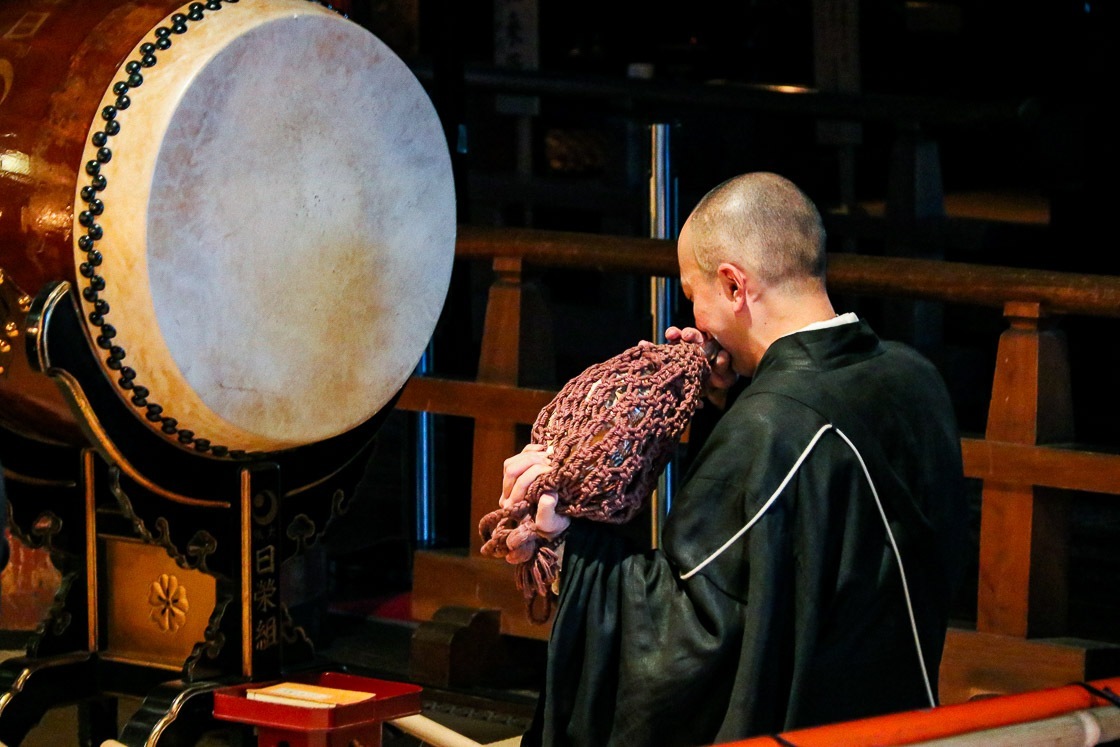
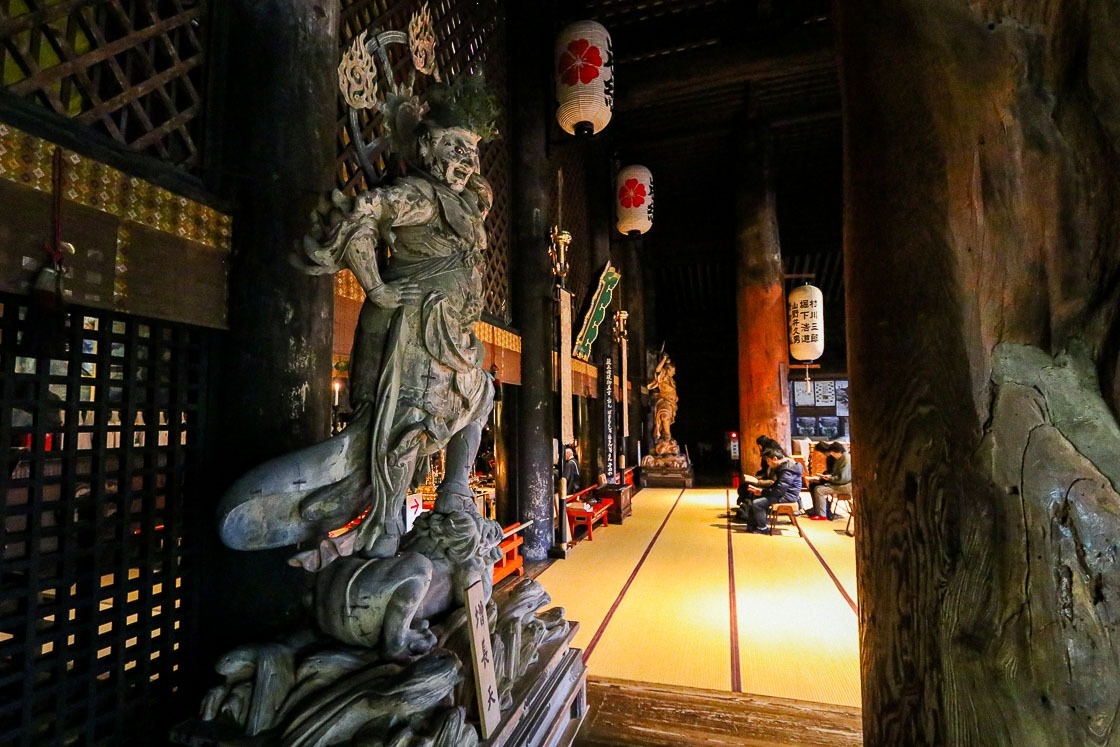
After that, I headed back to Yukawaya for breakfast and checked out not long after that. I walked down to the Shimo-Senbon area, which also was lined with restaurants and shops. After arriving back at Yoshino Station, I took a train to Yamato-Kamiichi Station.

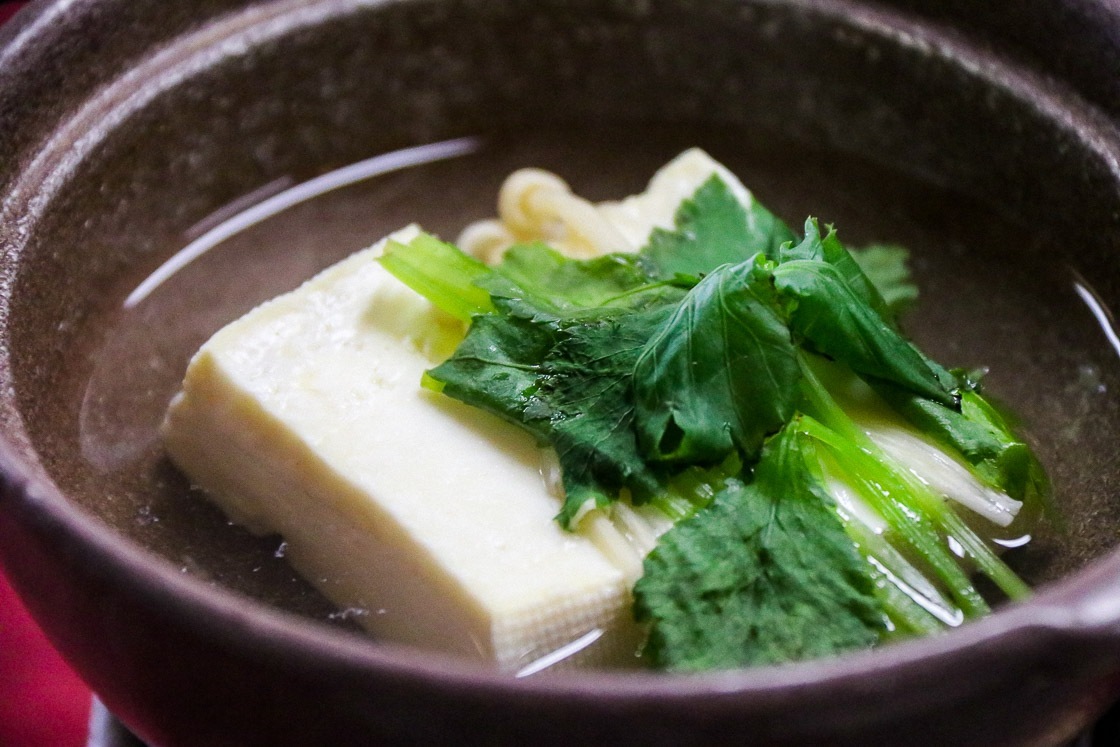
The plan was to visit two traditional craft businesses in the town of Yoshino: Tatsuda Seisakusho, a chopsticks factory, and Kitamura Shuzo Sake Brewery, a family-run brewery that has been in business for generations.
The one thing that connects these two businesses is the wood that they use. Cedar (sugi) trees, Yoshino-sugi, are grown on the slopes of Yoshinoyama and its surroundings. These trees grow tall and straight and have few or almost zero knots in their grain, which make them highly prized and ideal for quality wooden chopsticks and sake barrels.
I took a 20-minute taxi ride from Yamato-Kamiichi Station to Tatsuda Seisakusho, where I would participate in a chopstick experience. Here, I could make my very own Yoshino-sugi chopsticks by sanding the "raw" chopsticks down to make them rounded and decorate it.
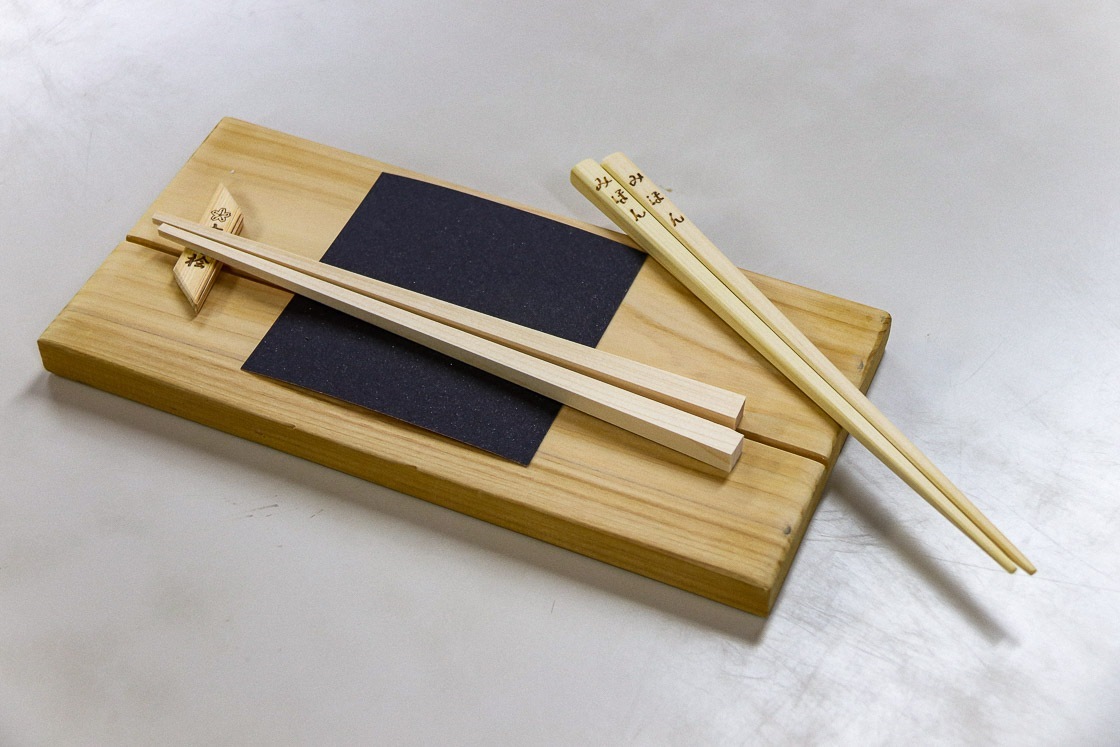
It was definitely a first for me to sand down wooden chopsticks by hand, and the task required more skills than I had expected. There is an art to sanding chopsticks. Care has to be taken to make sure that one side is not sanded more than the other three and to maintain the general shape. Note that advance reservations are required for this chopstick activity.
After that activity, the owner granted me a look at his factory where they make various kinds of chopsticks. I was blown away by the intricacies and the different styles of chopsticks. Depending on the shapes and quality of wood, these chopsticks were destined to either be used at high-class events or as regular disposable chopsticks.
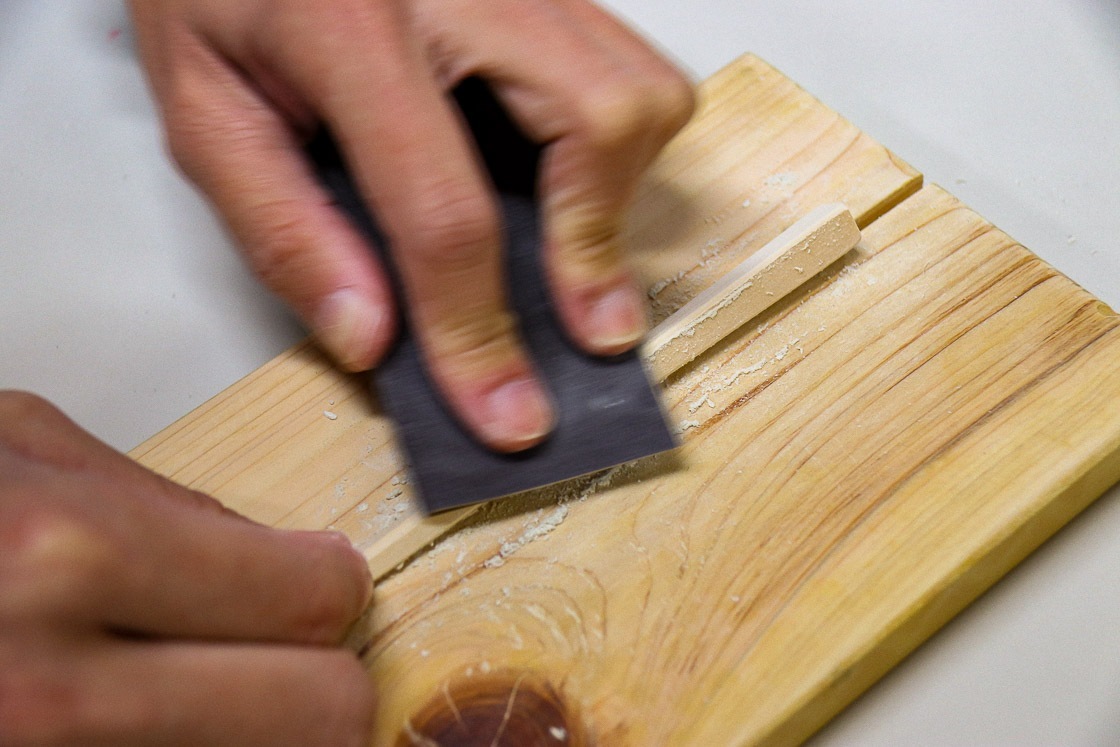

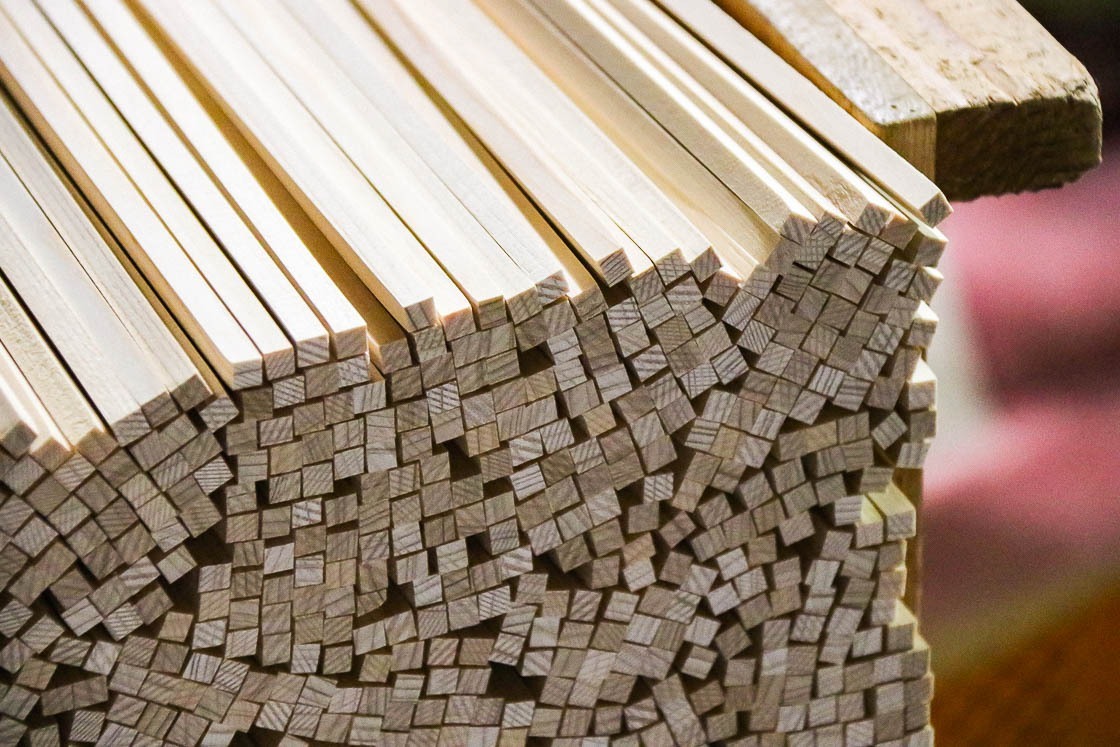
From there, it was back on the taxi to Kitamura Shuzo Sake Brewery where I was granted a special tour of the brewery. Note that the tour and sake tasting is not available to regular visitors, however, the brewery maintains a shop where it is possible to purchase a variety of their products. There is an ample selection of sake offered at Kitamura Shuzo and all of them possessing different characteristics. I had the opportunity to sample three of their main sake products, and each seemed to be better than the other.
Inside the brewery, I learned about the sake brewing methods as well as visited the warehouses where sake was made and stored. I also had the opportunity to see the wooden barrels which the sake was aged in. I realized that it takes an entire village to make sake, as the craft includes many elements.


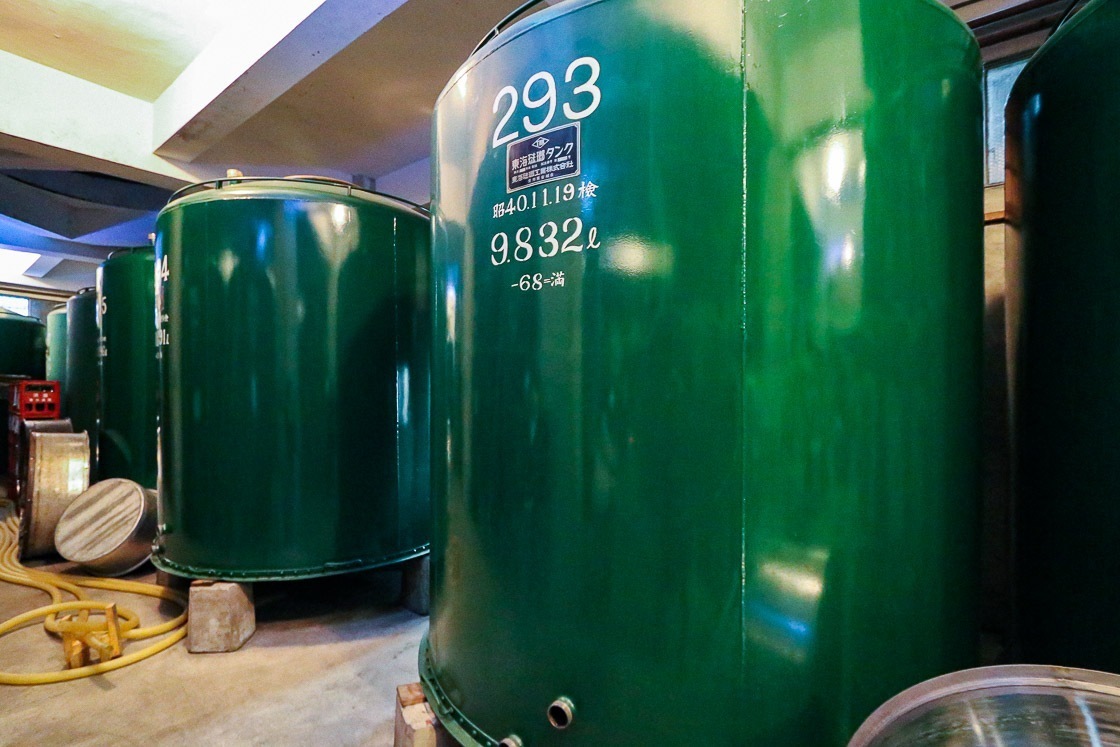
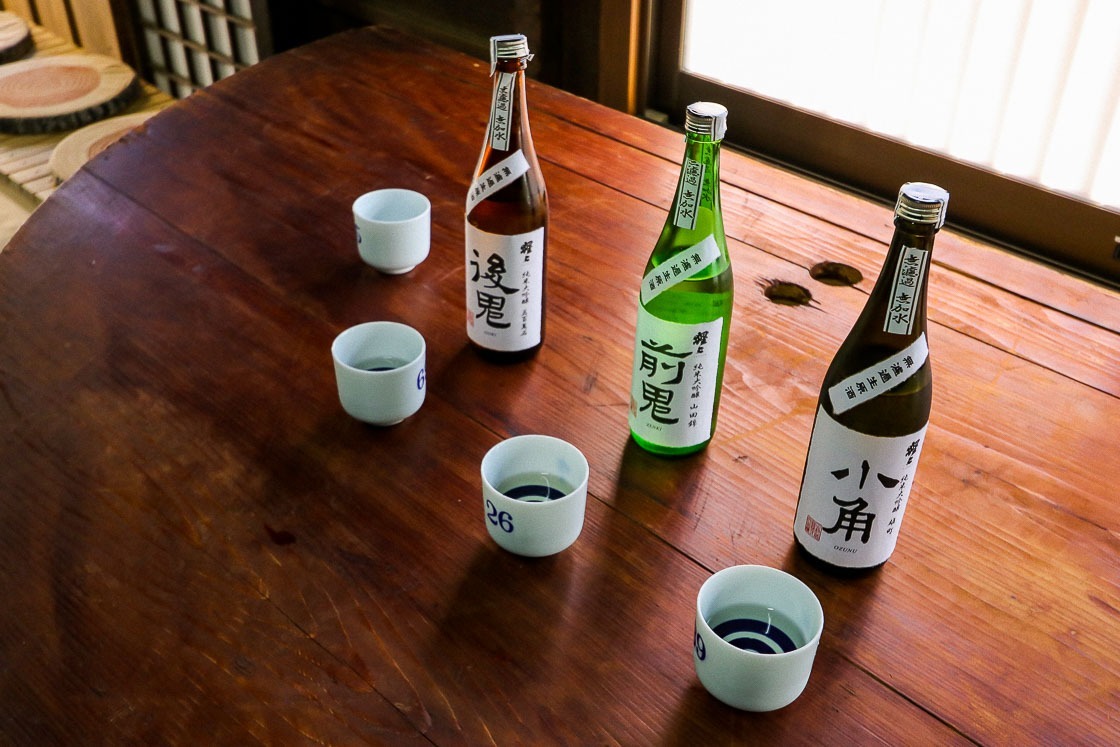
Next, it was on towards Hasedera Temple, my last stop for the trip. I walked to Yamato-Kamiichi Station from the brewery and then took trains for about 80 minutes via Kashiharajingu-mae and Yamato-Yagi stations. Hasedera's temple grounds are spacious, and it takes about 45-60 minutes to visit the main buildings. The main hall (hondo) is located at the top of a long, covered, staircase corridor known as noboriro. Climbing the steps is meant to help visitors clear and calm their mind and spirit as they approach the main hall.
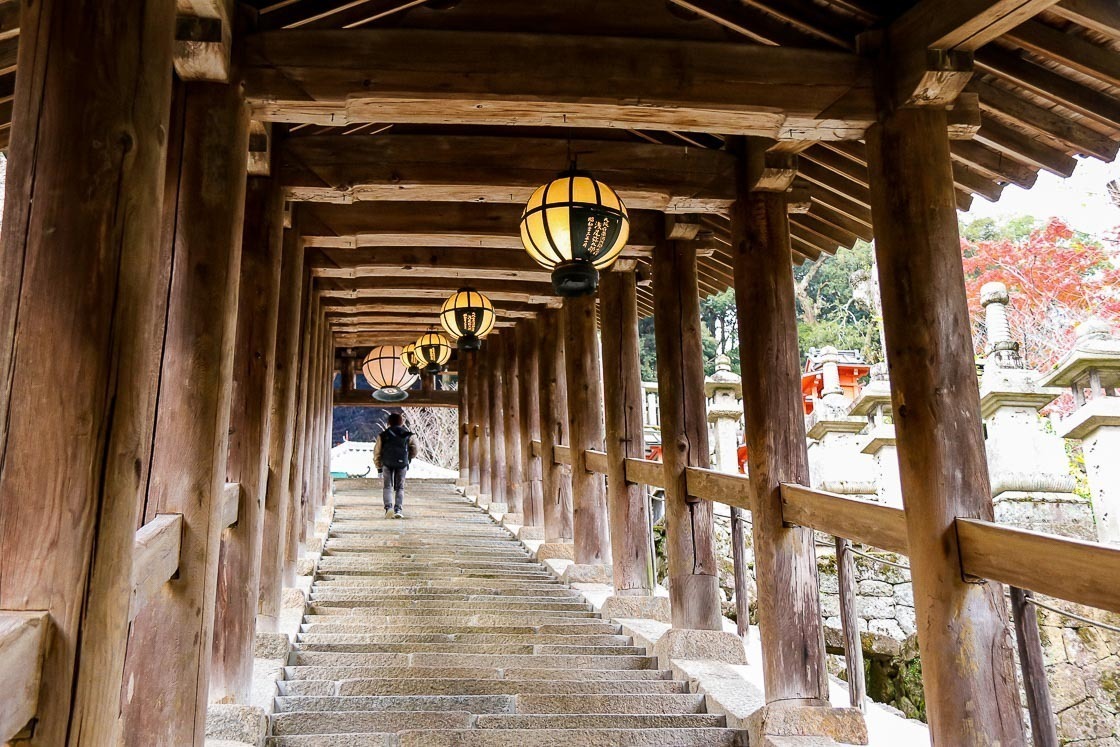
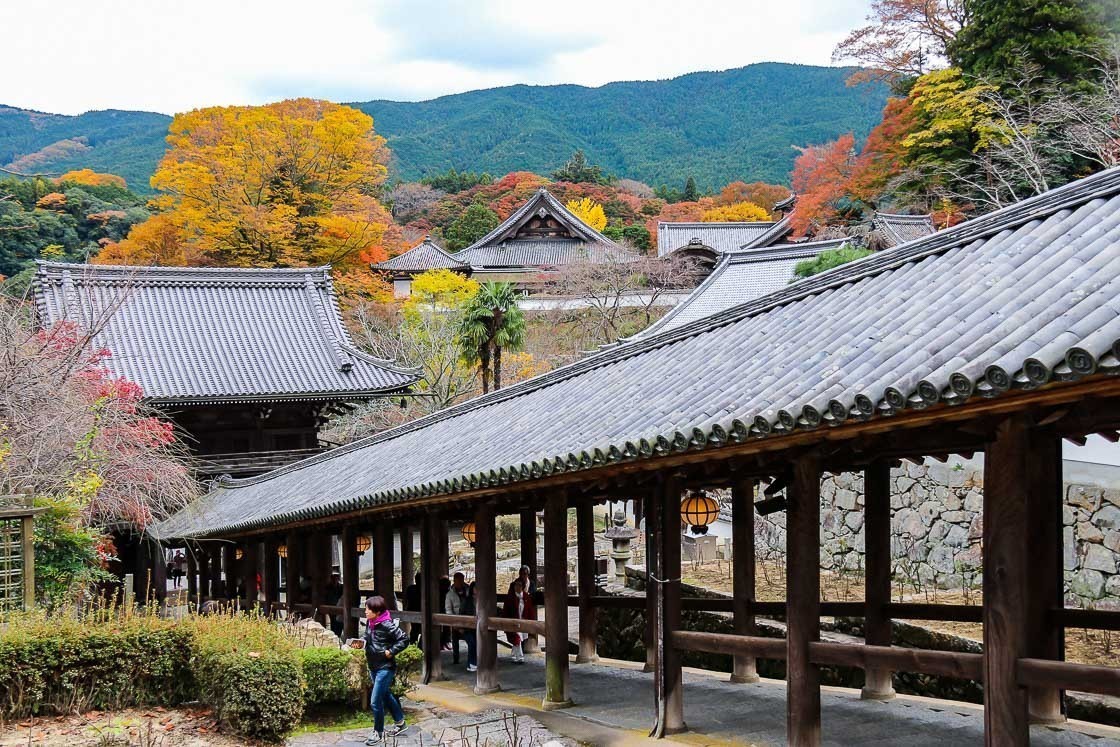
The main object of worship at Hasedera Temple is a ten meter tall wooden statue of the Eleven-headed Kannon Bodhisattva. Twice yearly in spring and autumn, a special event is held during which visitors can see the statue of the Kannon up-close and touch its foot. I was there in autumn and had the opportunity to touch the Kannon's foot.
The hondo also has a wooden stage, similar to the one at Kyoto's Kiyomizudera Temple, and I spent some time checking out the view from there. Hasedera Temple is also a popular autumn color viewing spot, and I was treated to some nice fall foliage.
Finally, I headed back to the station and made my way back to central Nara. It had been a great two days filled on the mountains with temples and local crafts. I also thought that the itinerary would be worth doing once more in a different season.
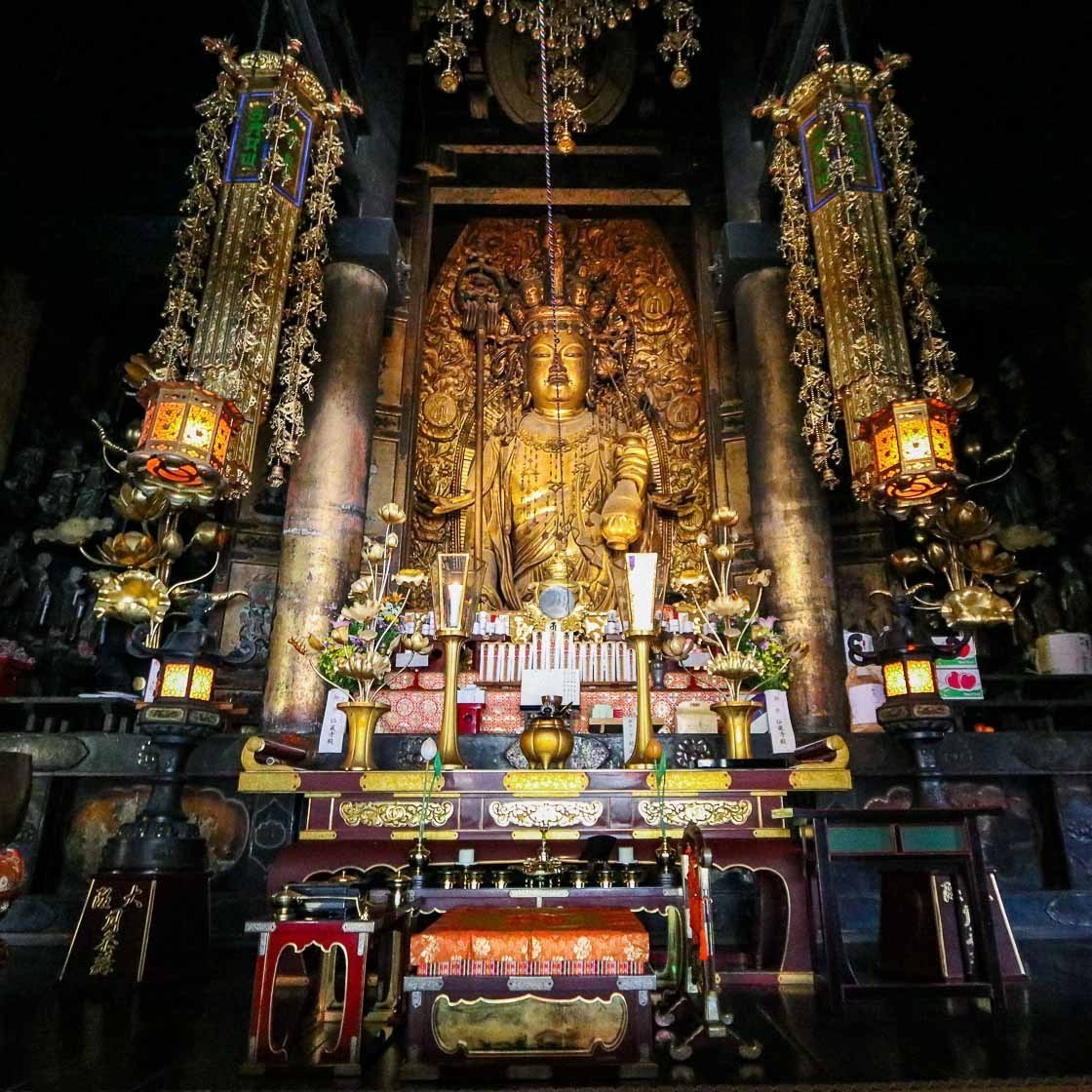

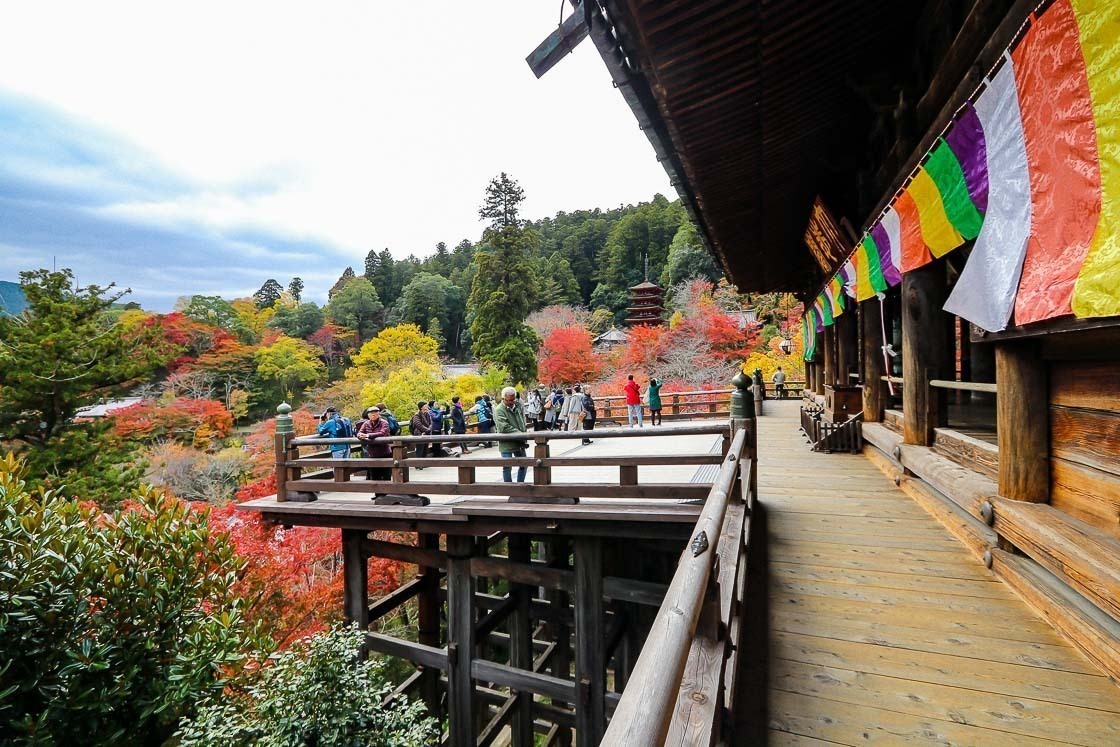
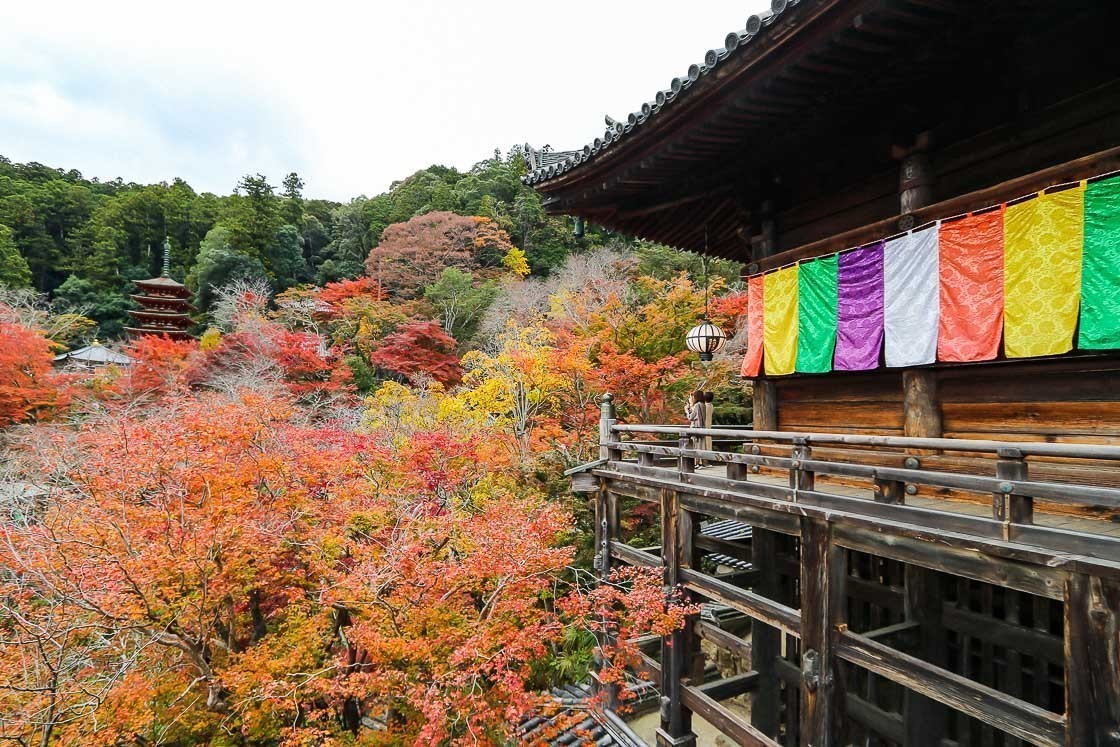
Access
How to get to and around Mt. Yoshino from Kansai Airport
From Kansai International Airport, take the Nankai Railway to Shin-Imamiya Station and transfer to the JR Osaka Loop Line to Tennoji. From there, it is a short walk to Osaka-Abenobashi Station on the Kintetsu Line, from where there are frequent, direct trains to Yoshino. Among these trains is the Blue Symphony, a limited express train operated by Kintetsu Railway that does the round trip twice per day, once in the morning and once in the evening. The one way journey on the Blue Symphony takes around 75 minutes and costs 1720 yen.
From Yoshino Station, visitors can choose to either hike up and down the mountain, or take the ropeway or bus to Yoshinoyama Station, from where hourly buses provide access all the way to the upper area. The one way journey from Yoshinoyama Station to Oku-Senbonguchi takes about 20 minutes and costs 500 yen.

How to get to and around the town of Yoshino from Mt. Yoshino
For this article, the most convenient train station to access the places I visited was Yamato-Kamiichi Station, two stations before Yoshino Station. The one way journey from Yoshino Station takes about 5 minutes and costs 180 yen.
Taxis are available at Yamato-Kamiichi Station and are the best way to get to Tatsuda Seisakusho, the chopsticks factory. The one way taxi ride takes about 20 minutes and costs around 3500 yen. The best way to get a return taxi is to ask the taxi driver who sent you there to come back again after about 90 minutes.
The journey by taxi to Kitamura Shuzo Sake Brewery from the chopsticks factory takes about 15 minutes and costs around 3000 yen.
From the sake brewery, it is about a 15 minute walk back to Yamato Kamiichi Station.
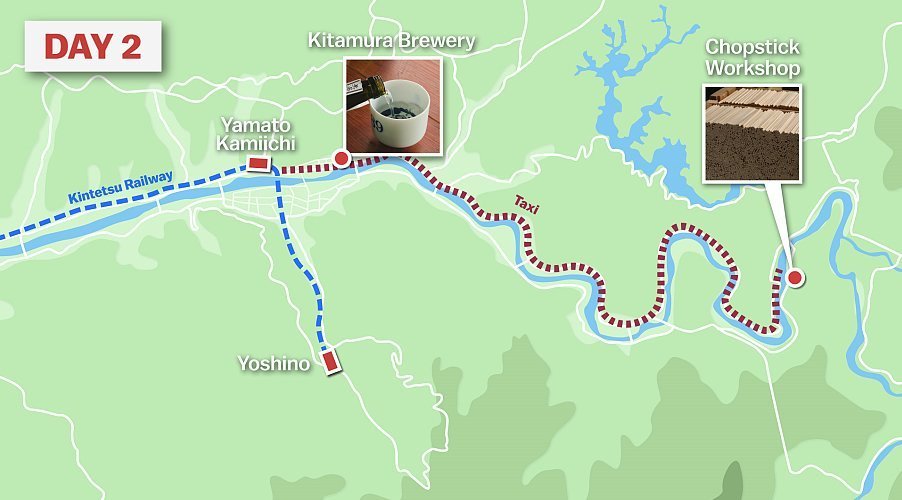
How to get to and around Hasedera from Yoshino
Hasedera Temple is about a 20 minute walk from Hasedera Station on the Kintetsu Osaka Line. Kintetsu Railway provides connections between Yamato-Kamiichi and Hasedera stations, and two transfers at Kashiharajingu-mae and Yamato-Yagi stations are required. The one way journey takes about 80 minutes by local trains (670 yen) or 60 minutes by limited express trains (1190 yen).
